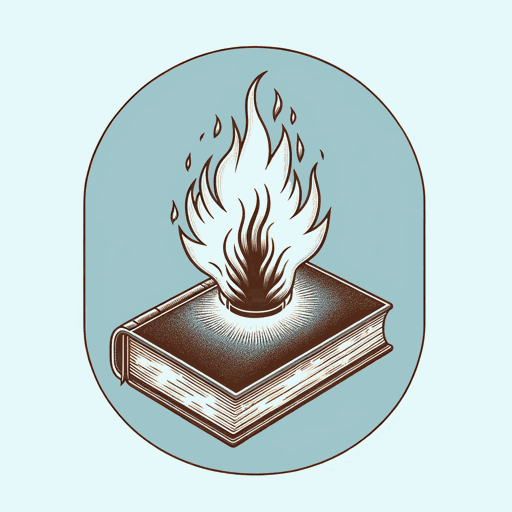78 pages • 2 hours read
Ray BradburyFahrenheit 451
Fiction | Novel | YA | Published in 1953A modern alternative to SparkNotes and CliffsNotes, SuperSummary offers high-quality Study Guides with detailed chapter summaries and analysis of major themes, characters, and more. For select classroom titles, we also provide Teaching Guides with discussion and quiz questions to prompt student engagement.
Symbols & Motifs
Religion
There are references to religion and the Bible throughout Fahrenheit 451, and they usually serve as a message of hope for Montag in his struggle against the oppressive system that molded him. He has a copy of the Bible in his possession as he journeys to meet Faber for the first time. Although the book is initially a source of frustration for Montag, as he struggles to grasp the magnitude of the text, Faber uses it as a tool to soothe, reading to Montag from the Book of Job as he travels home. The Bible’s importance is also highlighted by Faber’s reaction to seeing a copy of it for the first time in many years. Faber’s not a religious man, but even he finds great comfort in simply being able to touch the Bible and thumb through its pages. This society places little stock in religion, and Faber claims that Christ is “one of the family now” (51), referring to His diminished status as a product that system uses for commercial purposes.
The Bible empowers Montag, who memorizes sections from both the Book of Ecclesiastes and the Book of Revelation, which proves his worth to Granger. At the end of the novel, as Montag and Granger’s group turn toward the city and the search for survivors of the bombing, Montag recalls snatches of verse from both books that reassure both himself and the other men.
Related Titles
By Ray Bradbury

A Graveyard for Lunatics
Ray Bradbury

All Summer In A Day
Ray Bradbury

A Sound Of Thunder
Ray Bradbury

Dandelion Wine
Ray Bradbury

Dark They Were, and Golden Eyed
Ray Bradbury

Death is a Lonely Business
Ray Bradbury

Marionettes, Inc.
Ray Bradbury

Selected from Dark They Were, and Golden-Eyed
Ray Bradbury

Something Wicked This Way Comes
Ray Bradbury

The Illustrated Man
Ray Bradbury

The Martian Chronicles
Ray Bradbury

The Other Foot
Ray Bradbury

The Pedestrian: A Fantasy in One Act
Ray Bradbury

There Will Come Soft Rains
Ray Bradbury

The Toynbee Convector
Ray Bradbury

The Veldt
Ray Bradbury

Zero Hour
Ray Bradbury

